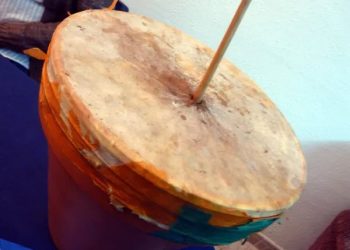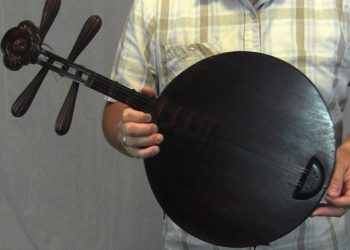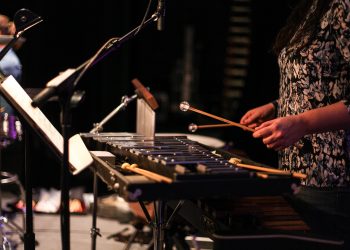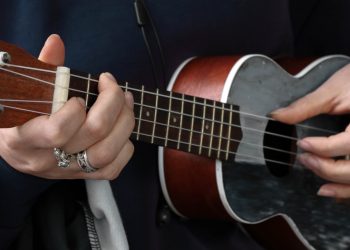Music has been a form of expression and entertainment for thousands of years, and over time, humans have developed a variety of musical instruments that produce different sounds and tones. Some of these instruments have become incredibly popular and widely recognized, such as the guitar, piano, and drums. However, there are also many lesser-known instruments that deserve recognition, including those that start with the letter W. In this article, we will explore the top 12 musical instruments that start with the letter W, highlighting their unique features, history, and cultural significance.
From ancient times to the modern era, the world has seen a plethora of musical instruments that have emerged from different parts of the globe, each with its own distinctive sound and design. The letter W may not be as common as other letters in the musical instrument world, but it still holds a variety of instruments that are worth exploring. We will delve into the musical roots of these instruments and their development over time, as well as their current popularity and relevance. Whether you’re a music enthusiast or simply curious about the diverse world of musical instruments, this article will provide an engaging and informative overview of the top 12 musical instruments that start with the letter W.
1. Wagner Tuba
Continuing the exploration of traditional Indian instruments, let’s take a look at one that is relatively new to the scene. The Wagner Tuba is an instrument designed by German composer Richard Wagner in 1853. It has since become popular amongst classical and pop music circles alike for its unique sound.
The tuba itself is made up of four large conical bores connected together with two mouthpieces – one at each end. This allows it to be played from either side and gives the musician more control over their playing style. Its size makes it perfect for use as an accompanying instrument or soloist in orchestras, bands, and other musical groups.
It produces a distinctively loud yet charming sound due to its four-bore design which amplifies any note produced on it. It also has an impressive range which can span five full octaves and beyond depending on how much air pressure is applied during play. As such, musicians are able to create melodies both high and low while still staying within the same key signature throughout their performance.
This versatility makes it a great choice for improvisation as well as structured compositions set out beforehand. Not only does this make the Wagner Tuba perfect for performing all kinds of genres but it adds another layer of creativity to any piece of music regardless of style.
2. Wandindi
Switching gears, let’s move onto another traditional Indian instrument – the Wandindi. This flute-like instrument is made of bamboo and has been around for centuries in India. While it looks like a simple tube with two holes at either end, its sound is anything but ordinary.
The Wandindi produces an incredibly mellow tone that can range from soft to loud depending on how much air pressure is used while playing. Its unique design allows musicians to create intricate melodies by changing their breath control as they play. It’s also capable of producing multiple notes simultaneously which adds great depth and complexity to any piece performed on it.
This makes the Wandindi highly sought after among folk music circles who appreciate its subtle yet powerful sounds when played properly. Not only does it have lasting appeal within this genre but its versatility means it can be used across many different kinds of music styles too. Whether you’re looking for a gentle background accompaniment or something more upbeat and lively, the Wandindi will never disappoint!
Overall, the Wagner Tuba and Wandindi are both incredible instruments worthy of being explored by anyone interested in learning about traditional Indian music. From their distinct tones and versatile capabilities, these instruments bring an element of beauty and creativity to any musical performance they feature in – making them essential additions to any budding musician’s arsenal!
3. Washboard
Another traditional Indian instrument that is often overlooked is the Washboard. This simple yet effective tool can be used to create a variety of sounds ranging from light and mellow, to more raucous and powerful. It really shines when played as part of an ensemble, providing a strong rhythmic backbone for any song it features in.
The washboard works by attaching various objects such as coins, bottle caps or spoons onto its surface with string or rubber bands. When these items are rubbed against the board’s ridged metal face, they produce different tones depending on their size and material type – giving musicians plenty of options for creating unique rhythms and melodies.
What’s great about this instrument is that anyone can pick it up fairly quickly thanks to its straightforward design and easy-to-learn playing style. Plus, you don’t need any formal training or special equipment either – just your hands! With some practice and experimentation, you’ll soon master the basics of this enjoyable instrument in no time at all.
This makes the washboard perfect for those looking to add some extra flavor to their music without having to invest too much time into learning something new. Whether you want to spice up your existing repertoire or provide accompaniment during jam sessions with friends, this underrated instrument will never let you down!
4. Washint
If you’re looking for an even more modern twist on the traditional washboard sound, then Washint is definitely worth checking out. This unique instrument is a contemporary take on the classic design, featuring two adjustable wooden boards attached to each other by metal strings and springs. It comes with several different attachments that can be used to create a variety of sounds – from mellow jazz riffs to more upbeat dance beats.
The beauty of the Washint lies in its sheer versatility and ease-of-use; it’s incredibly simple to get started playing this instrument without any prior musical knowledge or experience. All you need are your hands and some creativity! In addition, its lightweight construction makes it perfect for taking along to jam sessions and gigs alike – so there’s no need to worry about lugging heavy equipment around.
What really sets the Washint apart though is its ability to make beautiful music quickly and easily. Its grooves provide musicians with plenty of room for improvisation, allowing them to craft unique melodies as they go along. Best of all, because it produces such a broad range of tones, you don’t have to limit yourself when playing either; just let your imagination run wild!
Whether you’re an experienced musician or a complete beginner, the Washint could be exactly what you need for creating beautiful tunes anytime, anywhere. So why not give it a try today? With enough practice and patience, who knows where your music journey may lead?
5. Washtub Bass
Taking the Washint’s simplicity one step further, we come to the washtub bass. This instrument is a prime example of how creative musicians can be with limited resources – it requires nothing more than an empty washtub, some string and a stick!
The basics are easy enough for anyone to pick up; simply pluck the strings with your fingers or use the stick to strum them like a guitar. The sound won’t be as full-bodied as that of its store-bought counterparts but it’s surprisingly versatile nonetheless. With practice, you’ll be able to create all sorts of different tones and rhythms just by varying your techniques.
In addition to its affordability and portability, another great thing about the washtub bass is that it produces natural overtones which adds richness and depth to any piece of music you might play on it. So if you’re looking for something unique without breaking the bank then this could definitely be worth exploring.
From jazz bands in New Orleans to bluegrass festivals in Appalachia, people have been using these instruments for hundreds of years – so why not join their ranks? Whether you want to lay down some down home grooves or just experiment with sounds, playing a washtub bass can offer hours of fun and inspiration!
6. Water Drums
Taking things up a notch, let’s explore the world of water drums. These instruments are another great example of how simple objects can be turned into complex, captivating sounds. All you need is an empty container – like a bucket or jug – and some water to create your own percussion masterpiece!
The beauty of these instruments lies in their versatility; by varying the amount of water inside them, you can achieve different pitches and tones. You don’t even have to limit yourself to just one instrument either – try combining multiple containers with different levels of liquid for interesting effects. And if you’re feeling adventurous, why not add some other items such as pebbles or coins for extra texture?
Water drums also offer plenty of creative potential when it comes to playing techniques too: from gentle taps and splashes to vigorous slaps and strokes, there’s something here for everyone no matter what style they prefer. Plus, since they require minimal resources and setup time they make great on-the-go instruments that you can take anywhere!
So whether you want to jam out with friends or just relax while listening to soothing rhythms, water drums could be just the thing for you. With its unique soundscape and ease of use, this ancient instrument will surely bring hours of musical joy!
7. Waterphone
Taking things up a notch, let’s take a look at the waterphone. This device is truly one of a kind – combining elements from both musical instruments and sculpture to create an experience unlike any other! The main component of this instrument is its hollow metal body which houses several resonator rods made from bronze or stainless steel. When played with either mallets or bows, these rods vibrate to produce hauntingly beautiful tones that range from deep drones to shimmering highs. To add even more depth and complexity, some waterphones also include additional features such as interchangeable tubes and chambers for further experimentation.
The sheer diversity of sounds produced by the waterphone makes it perfect for creating evocative soundscapes in genres like ambient music and film scoring. Its mesmerizing timbre has been used in many television shows, movies, video games and beyond – making it a true staple in modern audio production. Plus, since you can play them without any electricity they make great instruments for outdoor performances too!
What’s more, due to their unique design waterphones are often seen as works of art themselves; each one crafted with care and precision by skilled craftsmen who have dedicated their lives to mastering this amazing instrument. Whether you choose to admire them aesthetically or explore their sonic capabilities firsthand, there’s no denying that the waterphone provides an unforgettable experience every time it is played.
No matter what your style may be, this captivating instrument is sure to inspire all kinds of creativity when added into your repertoire. So if you’re looking for something new and exciting why not give the waterphone a try? With its versatile versatility, stunning visuals and incredible sounds, it just might become your favorite instrument yet!
8. Wheel Harp
Another instrument that produces a unique sound is the wheel harp. This unusual-looking stringed instrument consists of several metal disks, each with their own strings stretched across them. It’s played through the use of an attached handle which sets these disks spinning and creates captivating melodies when plucked or strummed. The result is an almost ethereal soundscape – perfect for adding depth to any musical composition.
The beauty of the wheel harp lies in its ability to adapt to multiple styles of music. Its range of notes is wide enough that it can be used as a solo instrument, while its gentle tones also make it ideal for atmospheric pieces. Plus, due to its construction, players are able to alter the dynamics easily by increasing or decreasing how fast they spin the wheels – allowing them to craft intricate arrangements with relative ease.
In terms of aesthetics, this instrument has plenty going for it too! With its metallic disk design and gleaming wooden frame, there’s no denying that it’s visually striking – making it great for display purposes as well as performance ones. Not only does it look stunning but feels great too; many musicians report feeling incredibly relaxed while holding this elegant piece in their hands – further enhancing its appeal even more!
Clearly then, the wheel harp offers far more than just beautiful sounds; it also provides visual pleasure and tactile comfort that few other instruments can match. Whether you’re looking for something new to add flavor to your existing compositions or want a completely different way of expressing yourself musically, this remarkable instrument certainly won’t disappoint!
9. Whistle
The next instrument on our list is the whistle. An incredibly versatile tool, whistles can be used to create a range of sounds and effects that are difficult to replicate with other instruments. From subtle melodies to high-pitched squeaks and trills, these simple devices have been around for centuries – providing musicians with creative freedom like never before!
Whistling has become increasingly popular in recent years due to its ability to add an extra layer of flavor or texture to any type of music. It’s also ideal for accompanying upbeat songs as it adds energy and excitement; all you need is one finger placed over the mouthpiece and you’ll be able to produce a wide variety of tones – from soft warbles to loud shrieks. Furthermore, many professional performers now use special electronic whistles which allow them to control the pitch more accurately than ever before – giving them even greater versatility when performing live.
A major benefit of using this particular instrument is how easy it is to learn. Even if you’re completely new to playing music, simply making sure your lips are tight enough while blowing will help you achieve some basic notes quickly; so there really isn’t any excuse not to get started right away! Moreover, practicing regularly with a metronome (to maintain accuracy) will soon result in beautiful pieces being composed without too much effort – allowing you make full use of this incredible piece of equipment sooner rather than later.
In short then, it’s clear why whistles remain such an essential part of musical performances today – providing artists with endless opportunities for self-expression no matter what genre they play. So why not give it a try yourself? With just a few minutes practice per day, you could soon be producing amazing tunes that rival those made by experienced professionals!
10. Willow Flute
The willow flute is a unique and beautiful instrument, with its gentle tones capable of stirring emotion in listeners. Its haunting melodies have been used for centuries to convey feelings of joy, sorrow, longing and hope; making it an ideal choice for any kind of composition. Despite being relatively inexpensive compared to other instruments, the willow flute can produce some truly remarkable sounds – adding depth and character to your performance like no other!
What really sets the willow flute apart from similar devices is its ease of use. Although mastering this particular tool takes time and practice (like any good music-making), you’ll be able to pick up basic notes quickly – as long as you keep your finger placement consistent throughout each piece. Additionally, due to its portability, you don’t even need an amplifier or stand if you want to play outdoors; just make sure there’s enough wind blowing through the reeds and you’re ready to go!
One thing that makes playing such a pleasure is knowing how versatile it can be. Whether using traditional techniques or experimenting with more modern approaches, the possibilities are virtually endless when creating new pieces – perfect for those who love exploring different musical styles. Furthermore, by taking advantage of both high and low notes on offer here, performers can add further texture to their soundscapes – giving audiences something truly special every single time!
And so whether looking for a way to relax after a stressful day or wanting an effective accompaniment for upbeat songs; the willow flute provides plenty of scope for creativity. With patience and dedication anyone can soon become proficient at producing these magical tunes – all whilst learning about one of humanity’s oldest instruments along the way!
11. Wind Chimes
Amidst the gentle breeze, the wind chimes’ melodic tinkling is a sound like no other. Unlike most instruments, these magical metal tubes don’t require any skill or knowledge to produce beautiful music – instead relying solely on nature’s own movements for their charming vibrations. And yet in spite of its simplicity, the instrument has so much potential – allowing users to create an array of harmonic and rhythmic sounds depending on how they’re arranged. Whether hung from trees, placed indoors or even incorporated into sculptures; each set of chimes produces a unique tune that can be tailored to suit any situation!
On top of this, there are also plenty of different shapes and sizes available. For instance, those with larger components tend to offer deeper tones while smaller ones provide more subtle melodies – perfect for creating delicate accompaniments during intimate moments. Adding further variation to performances is also possible thanks to various notes capable of being struck simultaneously when two similar-sized pieces are rubbed together (known as ‘bell ringing’). This technique is often used by musicians wanting something slightly more complex than just standard ringing patterns.
So why not give it a try? Not only does playing with wind chimes have calming effects on both mind and body, but it can also help boost creativity too! Furthermore, if you’re looking for something special to add ambience at your next gathering then this could be the perfect choice; providing guests with uniquely captivating music that will linger long after the event has ended.
A timeless classic since ancient times, wind chimes remain one of our oldest musical devices; offering endless possibilities for anyone wanting to experiment with new sounds. With such versatility and ease-of-use now available at our fingertips; it’s no wonder these harmonious instruments continue to bring joy wherever they go!
12. Wood Block
Following the tranquility of wind chimes is a much more percussive sound that has been popular for centuries: wood block. The versatile instrument, usually made from hardwoods such as maple or birch, provides an array of tones depending on how it’s struck and its size. Its unique timbre makes it perfect for adding accents to any musical piece; acting almost like a drum set in miniature – with each strike producing a distinct pitch and resonance!
As well as being used for creating rhythms, this wooden tool also works great when incorporated into melodic patterns too. By varying the strength of strikes, players can create interesting staccato passages and even subtle arpeggios between notes. Additionally, because the tone produced by each strike decays quickly; there’s no need to worry about playing excessively loud – allowing users to stay relaxed while still achieving their desired effect.
Furthermore, due to its portability and affordability, wood blocks have become increasingly popular amongst street performers and partygoers alike; letting them add some extra oomph to their music without breaking the bank. And if you’re looking for something unusual then why not try experimenting with different sized blocks? From deep bass-like sounds to higher pitched clacks – all sorts of possibilities await those brave enough to take up hammering away at these small cubes of joy!
No matter what type of performance you’re taking part in, having access to a quality wood block is sure to make your show stand out from the crowd. With its distinctive sound and ease-of-use now easily accessible – now could be the perfect time for you explore new creative avenues with this traditional percussion device!










